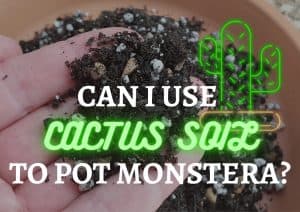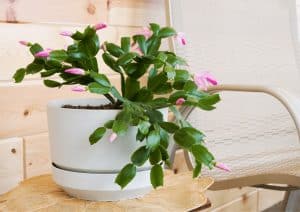Are Orange Peels Good For Houseplants?
-
Chris Dosser
- December 29, 2021
If you buy something using the retail links in our articles, sometimes we earn a small affiliate commission. This does not impact the products we recommend.
There are many ways that you can help give your houseplants a boost so that they grow to their fullest potential. Commercial fertilizers are one such option however these concentrated chemicals can inadvertently harm your houseplants if over applied.
Utilizing natural nutrient sources is a safer alternative to help your houseplant flourish – and this includes the addition of organic material such as the discarded skin of citrus fruit to your plant’s potting soil.
Orange peels contain high concentrations of sulfur, nitrogen, calcium, magnesium, and many more nutrients that can provide houseplants with a quick nutrient boost. In addition, orange peel also has many side benefits, from pest control to freshening up the air.
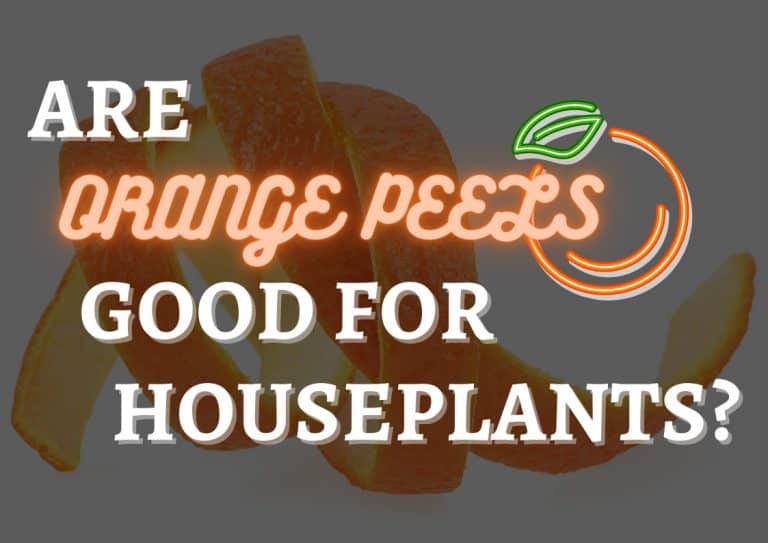
Benefits of using orange peels as soil additives
Orange peels benefit indoor plants in several ways including acting as:
- An excellent fertilizer and soil acidifier
- A natural pest control measure
- Biodegradable seedling pots
- A natural air freshener
Before we jump into all the benefits that orange peels can have, let’s discuss a bit about the types of orange peels that are best to use for fertilizer, pest control, and much more.
There’s no particular type of orange that you should be using to procure the most appealing peel (pun intended!). However, it is best to choose oranges that aren’t exposed to or treated by toxic chemicals; this not only benefits your houseplants but you too! Go organic if you can.
Any variety of orange, satsuma, mandarin, clementine or tangerine will do the trick!
Soil booster
Orange peels are full of valuable, plant-boosting nutrients like nitrogen, potassium, phosphorus, and magnesium. Adding orange peels to your composting pile can boost its nutritional value.
However, you don’t have to sit and wait for your compost pile to mature for your houseplants to reap the benefits of orange peels. You can simply add them directly to the soil of your potted plant for a quick nutrient booster. You can add them in one of two ways: cut the peels into small pieces and mix them into the soil, or dry the peels and grind them into a fine powder to apply to the surface of your potting soil.
Changing soil pH is another added benefit of orange peels. Many common houseplants thrive in slightly acidic soil pHs, which can be achieved by incorporating a few citrus skins.
Pest control
Orange peels contain an aromatic compound called limonene that naturally repels many insects. In fact limonene can deter (and actually kill) many different common pests, including ants and aphids.
Orange peel can also be used to keep mosquitos away from you and your pets!
You can place fresh orange peels into plant pots that are present in an area of the house prone to marauding mosquitoes, such as a porch seating area, to create another barrier of defence against the biting beasties!
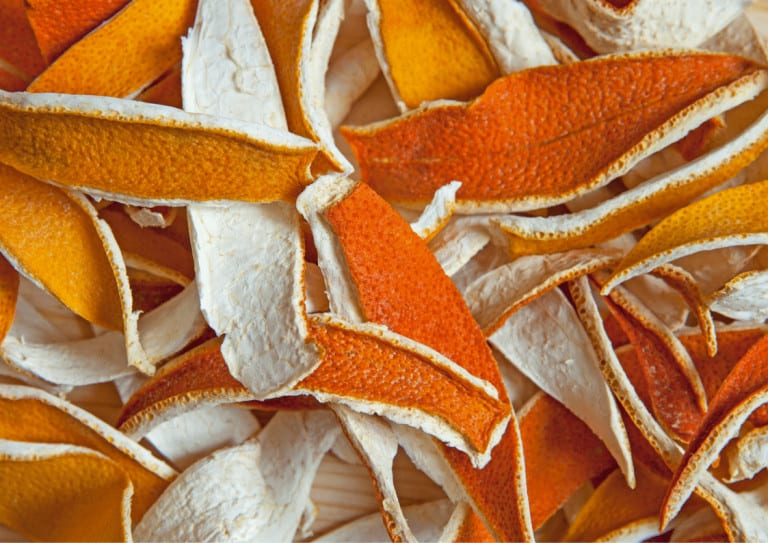
Environmentally friendly pot for seedlings
Growing seedlings can sometimes involve lots of tiny plastic pots that become virtually unusable in a matter of weeks. You can do your part to keep the Earth green and add a bit of color to your life by using an orange peel as a seedling starter pot.
Simply cut an orange in half with a sharp knife, remove the fruit, fill it with the appropriate soil, add a seed, water, and wait. Once your seedling begins to sprout, you can simply transplant the entire thing, orange peel and all, into a larger pot or outdoors.
There’s no need to worry about waste when you’re using fruit as a seedling pot!
Natural cleaner and air freshener
Mixing orange peels and boiling water can create a fantastic air freshener with no harsh or toxic chemicals. Once the water has cooled you can then use the solution to hydrate any thirsty foliage.
There are so many different uses for orange peels, but they aren’t the only appealing peel found in the kitchen. Bananas have some great benefits, too!
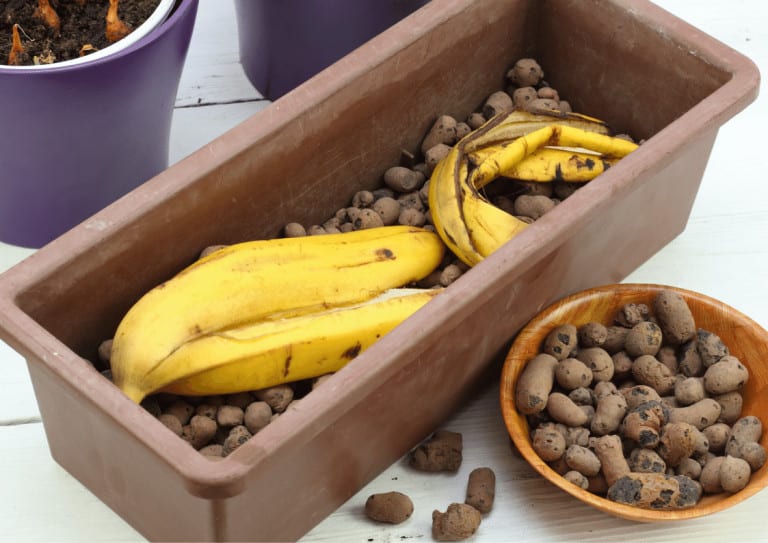
Bananas can be appealing too!
It’s not just orange peels which offer benefit to houseplants. Banana peels and even coffee grind can be used alongside orange peels to benefit your houseplants.
As banana peels decompose, they can add nitrogen, phosphorus, potassium, and magnesium to the soil of your houseplant. The rotting banana peels’ will release essential nutrients faster (vs orange peel) and will help improve the availability of food provided to plants that have access to both.
This approach is very similar to slow release commercial fertilizers, without any added artificial chemicals.
Before you go…
Keeping your orange peels out of the garbage and mixed in amongst your houseplant pots has a number of wonderful benefits, from adding extra nutrients to your plant’s soil to keeping away unwanted pests.
If the natural methods of pest protection aren’t working fast enough you might wish to employ some more immediate help.
How Long Does It Take For Systemic Insecticides To Work On Houseplants?

Chris Dosser
Co-Founder of Eden Indoors
Chris is a self-taught horticulturist with over a decade of experience caring for houseplants and creating lush, thriving indoor oases. He specializes in Monstera, and by self admission has a serious problem with buying and propagating rare indoor plants!
Similar Posts
Can I Use Cactus Soil To Pot My Monstera?
Does Cacti soil have the same properties as Monstera soil? And can you use the same potting mixture across both plant families? The answer is here..
Can I Use African Violet Soil For Christmas Cactus?
African violet soil is designed specifically to meet the needs this titular plant, but can it be used to also meet the care needs of Christmas cactus?

